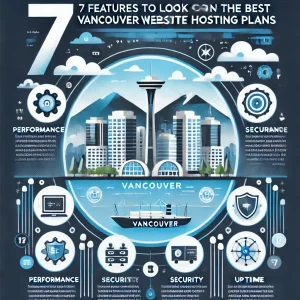
It was inevitable that eventually data was going to become Big data, and the increasingly digital nature of being in business and doing business is ensuring that trend just becomes more and more pronounced all the time. The catch as been in being able to make data available to partner organizations while still safeguarding the privacy interests anyone may have in the data being shared, and one of the more interesting things on the horizon early in 2022 is data clean room software.
With data leaks and the fallout of them being so often in the news it’s easy to see why we can relate to the need for this here at 4GoodHosting. Like any quality Canadian web hosting provider we have smaller level customers who may well see the promise of this for their online business or venture too. Many companies are in the process of looking for equally effective ways to collect, share and analyze data without compromising on privacy.
This also goes well beyond compliance, as companies that can incorporate this new technology and then be able to turn to any user interest group and give them 100% assurance to data security is going to be at an immediate advantage. Demand for such a resource has been growing over recent year, and it may be that with data clean rooms it’s about to become attainable and commonplace.
So what is the hype about, and what exactly is a data clean room? That’s what we’re going to look at with this week’s entry.
What’s a Data Clean Room?
A data clean room is a piece of software that allows brands and their partners to share data and gain mutual insights without compromising the privacy of the users’ data. Specifically it means not sharing any personally identifiable information or raw data with one another and in this way the data clean room serves as something of a neutral 3rd-party in major level affairs much like Switzerland would be if you wanted to use a geopolitical analogy.
At present there are 2 primary types of data clean room solutions available in the sharttech industry: The first ones are called walled gardens solutions and independent solutions is the other one, and both of them have advantages and drawbacks.
The question then become how this benefits a brand in particular, and to answer that we need to look at what consumer expectations have grown to become. What we do know is that consumers have become accustomed to certain type and level of user experience when it comes to brand interaction – most notably with seeing personalized, relevant content within an app and the type which has to this point been facilitated by access to user-level data.
Prime examples of this are cookies on the web or identifiers on mobile devices.
Unfortunately it has been that the exchanging of user-level data in this way has created the privacy problem that exists today. Consumers are rightfully asking to know how their data is being shared and with data clean rooms that allows the answer to be very different when that answer is being given honestly.
Experience Meeting Privacy without Compromise
AppsFlyer’s Privacy Cloud is a good example of this technology having been introduced, and with it and other data clean room solutions consumers will still get the great value and experience they expect from brands. But they’ll do so without any privacy concerns around how their data is being used. The catch is that any compromise on either end of the spectrum – customer experience or privacy – is going to be even more detrimental simply because of the inflexibility people have with either reality.
All of this takes on greater relevance when we consider that 3rd-party cookies are on their way out, and data clean room are already being earmarked for being a big part of filling that role so that user experiences can be optimized without sensitive data being put at risk. This is all because data exchanged between brands and partners continues to be the basis for accurate and actionable measurement.
The type of measurement which enables both sides to grow their businesses and give better experience to the end users. Up until now, however, this data exchange has been done based on user-level data only. What the data clean room does is provide a solution that maintains the great value and customer experience currently enabled by cookies, identifiers, and other user-level data – but doesn’t introduce the same privacy concerns that they wouldn’t be able to look past previously.
Additional Use Cases
Data clean rooms are already in use for operations in various industries. The way they provide secure environments where multiple parties can collaborate on sensitive and restricted data sets makes them very appealing, and you’ll find them in healthcare and life sciences, fintech (financial technology) insurance, fintech and other domains where sensitive data such as personal identifiable information (PII) has to be shared between multiple parties to perform analyses and generate insights.
Using AppsFlyer’s Privacy Cloud as an example again, what it does is let customers and partners keep up and be following all the various privacy regulations and guidelines but still getting the accurate insights they need in order to operate their business with maximum efficiency as well as best facilitate its growth.
And while other existing data clean rooms may have certain limitations, most are still going to have a lot of appeal for many. It should still be said though that data clean rooms from walled gardens have no cross-channel access, resulting in 1st-party date being mostly shared with their own data sets. Other ones may be limited to 1st-party data granularity as well as smaller partner ecosystems.
The biggest issue though is how it doesn’t have enough expertise with generating insights that the marketer needs, and there is almost always a need for aggregated reporting that is well suited for both business users and marketers.
Introducing Homomorphic Encryption
Homomorphic encryption enables the accurate generation of aggregated insights about the encrypted data, while not decrypting it at all. By remaining fully encrypted all the time it becomes a ‘zero trust’ technique where even the operator of the data clean room isn’t able to access the plain data. It uses a public key to encrypt the data, and of course that’s nothing out of the ordinary. What is different is how homomorphic encryption uses an algebraic system to allow functions to be performed on the data while it is in the encryption process.
Once that’s done then only the individual with the matching private key can access the unencrypted data after the functions and manipulation are complete. This means data remains secure and private even when someone is using it.
Bigger picture data clean rooms should be better for marketers to understand the real impact of their investments with more concrete evaluations of conversions and incrementality-based solutions being used test and control groups to isolate many affected variables. This will help marketers to optimized their efforts without putting shared data necessary for that into jeopardy if there’s any inherent security flaw or risk in the infrastructure.











